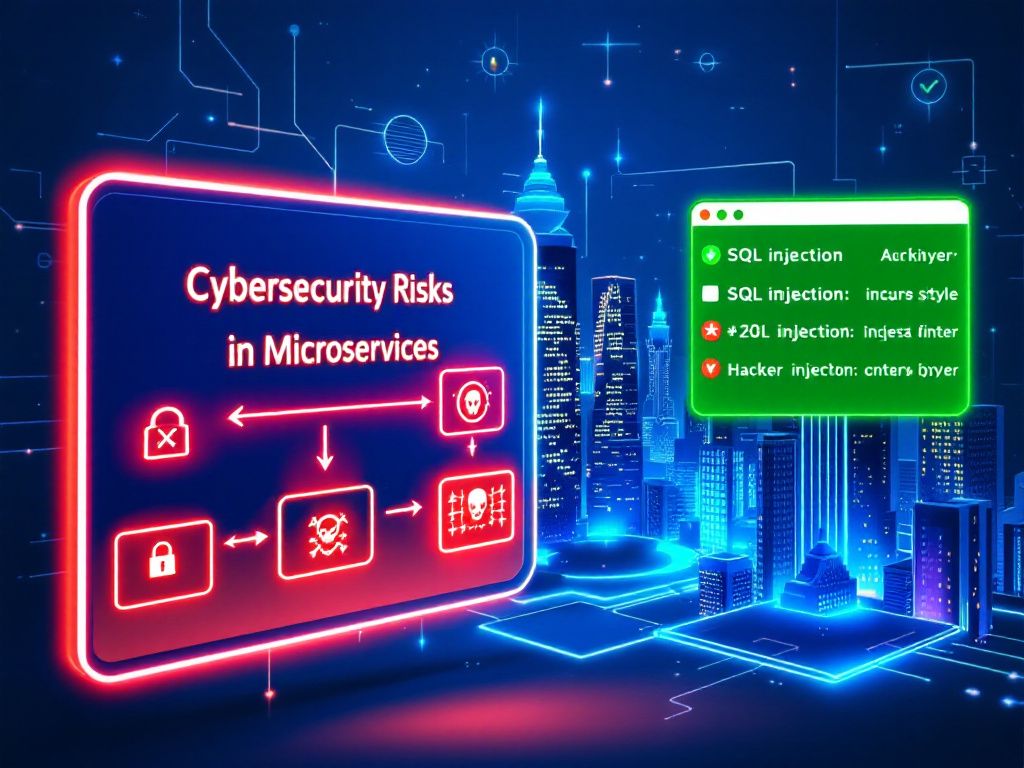Maximizing CVE Detection Accuracy: The Role of AI Agents in Modern Vulnerability Management
AI agents significantly enhance CVE detection accuracy by utilizing machine learning, deep learning, and natural language processing, enabling real-time analysis and improved vulnerability management. Successful implementations show substantial reductions in false positives and faster patching speeds, underscoring the importance of integrating AI into existing frameworks for better cybersecurity resilience.

Introduction to AI and CVE Detection
In today’s rapidly evolving cybersecurity landscape, AI agents—intelligent algorithms designed to enhance protective measures—have emerged as pivotal tools for identifying and managing vulnerabilities. Common Vulnerabilities and Exposures (CVE) play a crucial role in this domain, acting as standardized metrics that help organizations identify and address security weaknesses within their systems. Traditional CVE detection methods, however, often struggle with limitations, such as the reliance on manual processes and outdated tools that can lead to inaccurate results.

As cyber threats become more sophisticated, these conventional techniques are proving insufficient. Enter AI technologies, which offer new methodologies that can significantly enhance CVE detection strategies, transforming the way organizations manage vulnerabilities.
Understanding CVE and Its Importance in Cybersecurity
Common Vulnerabilities and Exposures (CVEs) are publicly disclosed cybersecurity vulnerabilities documented in a repository managed by the National Cybersecurity FFRDC, which enhances standardized reporting and tracking of vulnerabilities. The importance of timely and accurate CVE detection cannot be overstated, as it underpins an organization's ability to prevent security breaches and protect sensitive data.

Statistics indicate a stark rise in CVE-related incidents. For instance, in 2022 alone, the number of reported CVEs surged by over 30% compared to previous years, reflecting an alarming trend that emphasizes the need for swift action. Failure to address these vulnerabilities can lead to breaches that cost organizations millions in damages, loss of customer trust, and reputational harm.
The evolution of CVE management underscores the urgency for modern approaches to combat an ever-growing threat landscape. As cybercriminals exploit vulnerabilities at an unprecedented rate, organizations must adapt to ensure a robust cybersecurity posture.
How AI Agents Enhance CVE Detection
AI agents leverage various mechanisms to bolster CVE detection, including sophisticated data gathering processes, advanced learning algorithms, and actionable recommendations for tackling vulnerabilities. Unlike traditional methods that often rely on static analysis, AI can perform real-time analyses of system vulnerabilities, utilizing techniques like anomaly detection to identify irregular patterns indicative of potential threats.
 Several AI methodologies contribute to enhanced CVE detection capabilities:
Several AI methodologies contribute to enhanced CVE detection capabilities:
- Machine Learning Models: These algorithms can analyze historical vulnerability data to predict future risks based on behavioral patterns.
- Deep Learning Neural Networks: By training on vast datasets, these networks automate the evaluation of vulnerabilities, increasing detection rates substantially.
- Natural Language Processing (NLP): NLP assists in parsing technical reports, allowing for the extraction of critical vulnerability information from unstructured data.
Real-world implementations further exemplify the efficacy of AI in this sector. For instance, an organization that adopted AI for vulnerability detection reported a 50% improvement in detection rates and a dramatic reduction in false-positive alerts, leading to quicker remediation efforts.
Integrating AI into Existing Vulnerability Management Frameworks
Successfully incorporating AI agents into existing vulnerability management practices requires a strategic approach. It is imperative to align AI tools with current systems to ensure interoperability, coupled with comprehensive staff training to enhance AI comprehension among the team. Ongoing evaluation of AI performance is also vital, allowing organizations to adapt to changes and improve detection capabilities continuously.

However, several challenges can arise during integration, such as data quality issues that can compromise AI effectiveness, resistance to change among staff, and the necessity for continuous model updates to maintain accuracy. To mitigate these challenges, it is essential to ensure human oversight of AI findings. This oversight enables informed decision-making while addressing risks associated with over-reliance on automated systems.
Case Studies: Successful Implementation of AI Agents in CVE Detection
Numerous organizations have successfully employed AI agents to enhance their CVE detection accuracy, providing vital insights into best practices. For instance, a leading financial institution integrated AI into its vulnerability management framework and reported a 70% reduction in false-positive alerts and a 60% increase in the speed of vulnerability patching.
Key lessons learned from these implementations include the importance of a well-defined AI strategy, the necessity for robust data integration, and the value of a culture that embraces technological adoption. Organizations that replicate these successes often experience a significant enhancement in their overall cybersecurity posture.
Moreover, these gains extend beyond mere detection accuracy; they also lead to improved organizational efficacy in vulnerability management, ultimately resulting in a more resilient cybersecurity environment.
Future Trends and Best Practices in AI-driven Vulnerability Management
Looking ahead, emerging trends in AI technology promise to further revolutionize CVE detection strategies. Advancements in autonomy and intelligence will pave the way for AI systems capable of independently engaging in complex vulnerability management tasks, thereby streamlining operations.
The potential of automation within AI presents an opportunity for organizations to scale their vulnerability management efforts efficiently. AI-driven predictive analytics can significantly enhance vulnerability prioritization based on risk factors and contextual data, alagents to enhance their CVE detection accuracy, providing vital insights into best practices. For instance, a leading financial institution integrated AI into its vulnerability management framework and reported a 70% reduction in false-positive alerts and a 60% increase in the speed of vulnerability patching.
Key lessons learned from these implementations include the importance of a well-defined AI strategy, the necessity for robust data integration, and the value of a culture that embraces technological adoption. Organizations that replicate these successes often experience a significant enhancement in their overall cybersecurity posture.
Moreover, these gains extend beyond mere detection accuracy; they also lead to improved organizational efficacy in vulnerability management, ultimately resulting in a more resilient cybersecurity environment.
Future Trends and Best Practices in AI-driven Vulnerability Management
Looking ahead, emerging trends in AI technology promise to further revolutionize CVE detection strategies. Advancements in autonomy and intelligence will pave the way for AI systems capable of independently engaging in complex vulnerability management tasks, thereby streamlining operations.
The potential of automation within AI presents an opportunity for organizations to scale their vulnerability management efforts efficiently. AI-driven predictive analytics can significantly enhance vulnerability prioritization based on risk factors and contextual data, allowing organizations to allocate resources effectively according to urgency.
To proactively embrace AI technologies, cybersecurity professionals are encouraged to remain informed of trending AI developments, invest in training programs that foster AI fluency, and continuously evaluate AI's impact on security protocols. By embracing these best practices, organizations can enhance their vulnerability management approach and maintain a competitive edge in an increasingly digital world.
As AI technologies continue to evolve, marrying them with CVE detection strategies will be vital for organizations looking to fortify their cybersecurity frameworks and respond adeptly to the challenges ahead.
Backlinks and Resources
Backlinks:
- To learn more about vulnerabilities and their impact on cybersecurity, check out our detailed analysis on Cybersecurity Vulnerabilities.
- Understanding how AI can enhance vulnerability management is crucial; read about it in our post on AI in API Security.
- Explore a comprehensive guide on assessing your environment with our blog on Attack Surface Mapping: A Comprehensive Guide.
- For insights into application security in the context of AI and quantum computing, visit Quantum Computing and AI: Revolutionizing Application Security.
Resources:
-
OWASP. (n.d.). Common Vulnerabilities and Exposures (CVE). Retrieved from owasp.org
-
National Institute of Standards and Technology (NIST). (n.d.). National Vulnerability Database. Retrieved from nvd.nist.gov
-
MITRE. (n.d.). CVE® - Common Vulnerabilities and Exposures. Retrieved from cve.mitre.org
-
Center for Internet Security. (n.d.). CIS Controls. Retrieved from cisecurity.org
-
SANS Institute. (n.d.). The SANS Institute - CVE Impact. Retrieved from sans.org
-
Veracode. (n.d.). Defining Application Security in a Reality of Vulnerability Management. Retrieved from veracode.com
-
IEEE Xplore. (n.d.). AI-driven Vulnerability Management: A Comprehensive Study. Retrieved from ieeexplore.ieee.org





